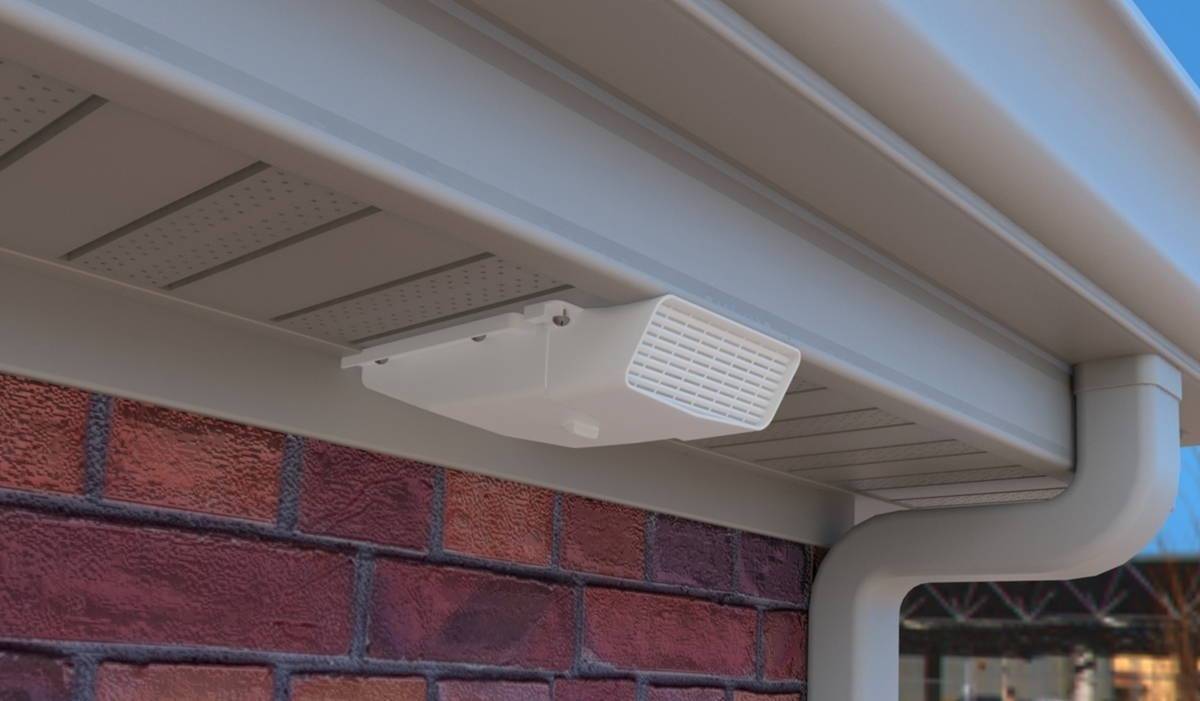Do You Need Soffit Vents?

All roofing companies and most homeowners know the importance of roofs. A good roofing system protects families from the elements and keeps them dry and warm. And, roof ventilation systems aren’t just required by building codes, they extend the life of a roof, help lower a home’s energy bills, and make a house an overall healthier place to live.
When installing or replacing a roof, you need to make sure that you address bath fan ventilation issues. That's where soffit vents come in since they are a key factor in protecting the life of your roof. That said, venting a bath fan to a soffit using standard soffit vents can be risky since they are not designed to exhaust the air out of the soffit’s passive air stream.
Those vents put you at risk of mold growth and moisture damage in the attic. So, when venting to the soffit, use a soffit vent that is designed to exhaust the air out of the soffit’s passive air stream.
Here are three reasons why you need a soffit vent to vent your bathroom exhaust fan.
Reason #1: Soffit vents are part of a building code requirement
In every state of the United States, it is a code requirement that bathroom fans must be vented to the outside. This ventilation requirement from bathrooms began in the 1946 Uniform Building Code. That code was created to prevent mold and other structural issues that can occur in a high-moisture environment in a home.
Reason #2: A soffit vent can prevent improper roof ventilation issues
If moist air from a bathroom is not effectively removed, several issues can arise ranging from mold to drywall damage. A soffit vent can prevent those ventilation issues, including:
- Water and roof damage
- Higher heating and air conditioning costs
- Increased moisture in the attic which can cause mold and rafter degradation
- Early deterioration of roof shingles
- Indoor air quality issues that can impact health
To avoid those issues, a correctly designed soffit vent must be installed that discharges air away from the soffit, beyond the gutter line.
Reason #3: Soffit vents can prevent expensive repairs and health issues
Improper bathroom exhaust venting can cause damage to the attic. This can cause potentially expensive repairs such as rafter replacement and insulation removal and replacement.
It is not only the cost of these issues but the potential danger to your family and pet’s health if black mold is spreading in your attic and airways.
Poor venting is costly:
- Annual cost of water damage for homeowners is $20 billion
- Annual cost of allergic rhinitis caused by dampness and indoor mold is $3.7 billion
- Mold remediation industry is currently valued at $210 billion
- Environmental impact from heat/air conditioning loss and landfills impact from insulation and other damaged building materials
Make homes safer and more durable using high-quality soffit vents
Look for the following features to be sure you are getting the most efficient and effective venting system:
- 90%+ of moist air is displaced outside the passive airflow of the soffit
- UV-protected materials to avoid discoloration or cracking
- Assurance that it is a closed system so that rodents and bugs cannot enter
For example, PreVent-It's 4-inch soffit vent was scientifically shown in lab testing at a major U.S. university to displace 95%+ of exhausted moist air away from the home. In fact, it is the only soffit vent approved in the state of New Jersey* for installation without the need for draft-blocking 4 feet** of soffit on either side.
The bottom line is that soffit vents can impact your family’s wellness, the health of your home, and ultimately the environment.
*Approved by NJ BPU Comfort Partners Subcommittee in October 2023.
**Always check local building regulations before installation.


